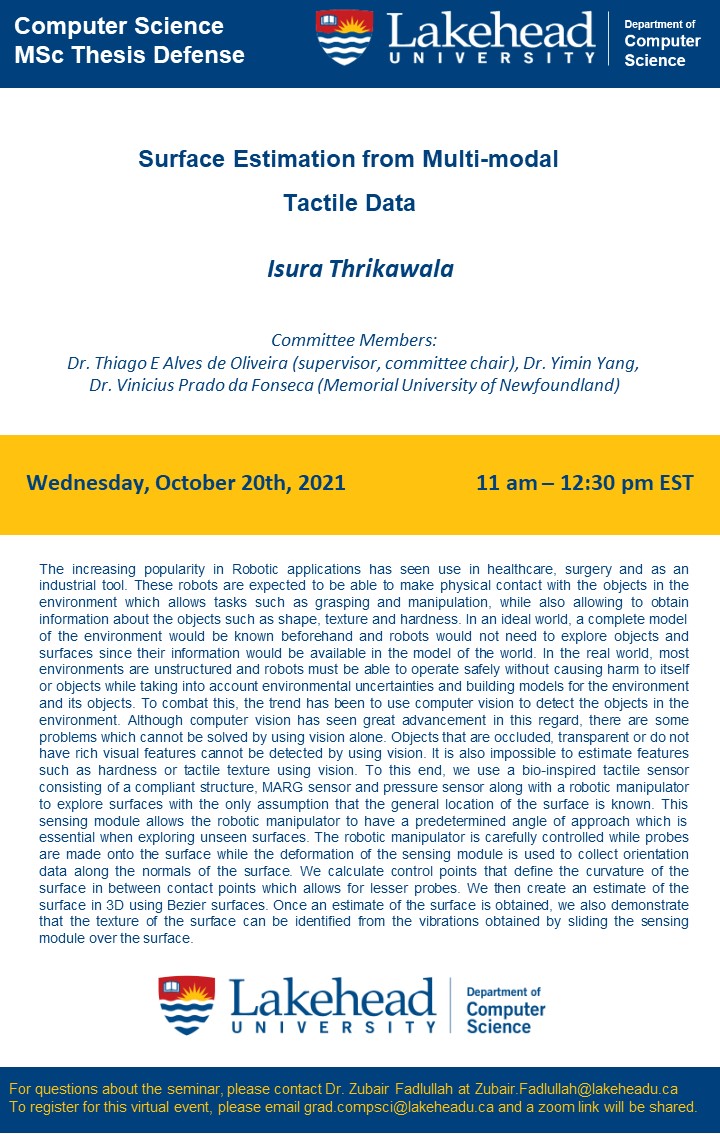Computer Science Department Thesis Defense - Isura Thrikawala

Please join the Computer Science Department for the upcoming thesis defense:
Presenter: Isura Thrikawala
Thesis title: Surface Estimation from Multi-modal Tactile Data
Abstract: The increasing popularity in Robotic applications has seen use in healthcare, surgery and as an industrial tool. These robots are expected to be able to make physical contact with the objects in the environment which allows tasks such as grasping and manipulation, while also allowing to obtain information about the objects such as shape, texture and hardness. In an ideal world, a complete model of the environment would be known beforehand and robots would not need to explore objects and surfaces since their information would be available in the model of the world. In the real world, most environments are unstructured and robots must be able to operate safely without causing harm to itself or objects while taking into account environmental uncertainties and building models for the environment and its objects. To combat this, the trend has been to use computer vision to detect the objects in the environment. Although computer vision has seen great advancement in this regard, there are some problems which cannot be solved by using vision alone. Objects that are occluded, transparent or do not have rich visual features cannot be detected by using vision. It is also impossible to estimate features such as hardness or tactile texture using vision. To this end, we use a bio-inspired tactile sensor consisting of a compliant structure, MARG sensor and pressure sensor along with a robotic manipulator to explore surfaces with the only assumption that the general location of the surface is known. This sensing module allows the robotic manipulator to have a predetermined angle of approach which is essential when exploring unseen surfaces. The robotic manipulator is carefully controlled while probes are made onto the surface while the deformation of the sensing module is used to collect orientation data along the normals of the surface. We calculate control points that define the curvature of the surface in between contact points which allows for lesser probes. We then create an estimate of the surface in 3D using Bezier surfaces. Once an estimate of the surface is obtained, we also demonstrate that the texture of the surface can be identified from the vibrations obtained by sliding the sensing module over the surface.
Committee Members:
Dr. Thiago E Alves de Oliveira (supervisor, committee chair), Dr. Yimin Yang, Dr. Vinicius Prado da Fonseca (Memorial University of Newfoundland)
Please contact grad.compsci@lakeheadu.ca for the Zoom link.
Everyone is welcome.

